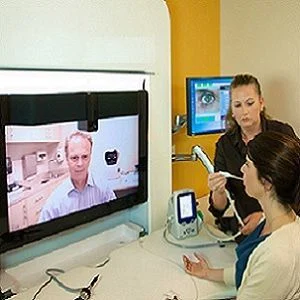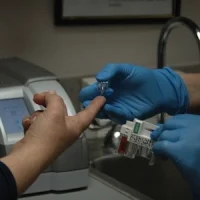A national survey found that 9 out of 10 physicians in the U.S. would use telehealth, provided they were properly reimbursed. The majority of physicians surveyed cite administrative issues and a lack of billing services to address the need for reimbursement tools as a major detraction from implementing telehealth into their practices.
The Robert Graham Center, the American Academy of Family Physicians, and Anthem conducted the first survey that gauges the attitudes and beliefs of primary care physicians towards the use of telemedicine. Key factors analysed were practice characteristics of those who use telehealth compared to those who do not, and information about practice patterns of the telehealth services provided.
"It's clear from our findings reimbursement remains one of the largest barriers to the use of telehealth in primary care," explained Andrew Bazemore, MD, the director of the Robert Graham Center. "However, this seems to be evolving, at least in the private sector, with several national large private carriers reimbursing doctors in 2016, if not earlier."
The results of the survey also revealed that licensing and credentialing barriers, an overall lack of training, an absence of guidelines and measurable outcomes are also major factors that hinder a wider telehealth adoption.
See Also:Face-to-Face Consult Advised Before Telehealth
Survey forms were mailed to more than 5,000 randomly selected family physicians, with rural physicians intentionally oversampled. The 31 percent response rate (1,557 respondents) was high by typical physician survey standards, the report authors noted. Fifteen percent of respondents indicated that they use telehealth in their practices.
Compared with non-users, family physicians who use telehealth are more likely to practice in a rural location, be younger, have practised for 10 or fewer years, and employ an electronic health record (EHR). Almost half (49 percent) of telehealth users practise as part of an organisation that is not physician owned (eg, an integrated health or hospital system).
More than half of telehealth users report using telehealth one to five times over the past year and 23 percent report using telehealth more than 20 times in the past year. In addition, nearly half of users indicated that they had used telehealth in the form of real-time video in the past 12 months.
While both users and non-users disagreed on many of their attitudes about telehealth, both groups agreed telehealth could potentially increase access to healthcare, improve continuity, and decrease travel time for patients.
Source: Robert Graham Center
Image credit: Flickr.com
The Robert Graham Center, the American Academy of Family Physicians, and Anthem conducted the first survey that gauges the attitudes and beliefs of primary care physicians towards the use of telemedicine. Key factors analysed were practice characteristics of those who use telehealth compared to those who do not, and information about practice patterns of the telehealth services provided.
"It's clear from our findings reimbursement remains one of the largest barriers to the use of telehealth in primary care," explained Andrew Bazemore, MD, the director of the Robert Graham Center. "However, this seems to be evolving, at least in the private sector, with several national large private carriers reimbursing doctors in 2016, if not earlier."
The results of the survey also revealed that licensing and credentialing barriers, an overall lack of training, an absence of guidelines and measurable outcomes are also major factors that hinder a wider telehealth adoption.
See Also:Face-to-Face Consult Advised Before Telehealth
Survey forms were mailed to more than 5,000 randomly selected family physicians, with rural physicians intentionally oversampled. The 31 percent response rate (1,557 respondents) was high by typical physician survey standards, the report authors noted. Fifteen percent of respondents indicated that they use telehealth in their practices.
Compared with non-users, family physicians who use telehealth are more likely to practice in a rural location, be younger, have practised for 10 or fewer years, and employ an electronic health record (EHR). Almost half (49 percent) of telehealth users practise as part of an organisation that is not physician owned (eg, an integrated health or hospital system).
More than half of telehealth users report using telehealth one to five times over the past year and 23 percent report using telehealth more than 20 times in the past year. In addition, nearly half of users indicated that they had used telehealth in the form of real-time video in the past 12 months.
While both users and non-users disagreed on many of their attitudes about telehealth, both groups agreed telehealth could potentially increase access to healthcare, improve continuity, and decrease travel time for patients.
Source: Robert Graham Center
Image credit: Flickr.com
Latest Articles
healthmanagement, telehealth, telemedicine, electronic health record, reimbursement, primary care, video
Majority of U.S. physicians say administrative issues and a lack of billing services to address the need for reimbursement tools are a major hindrance to telehealth implementation, according to a new survey,










